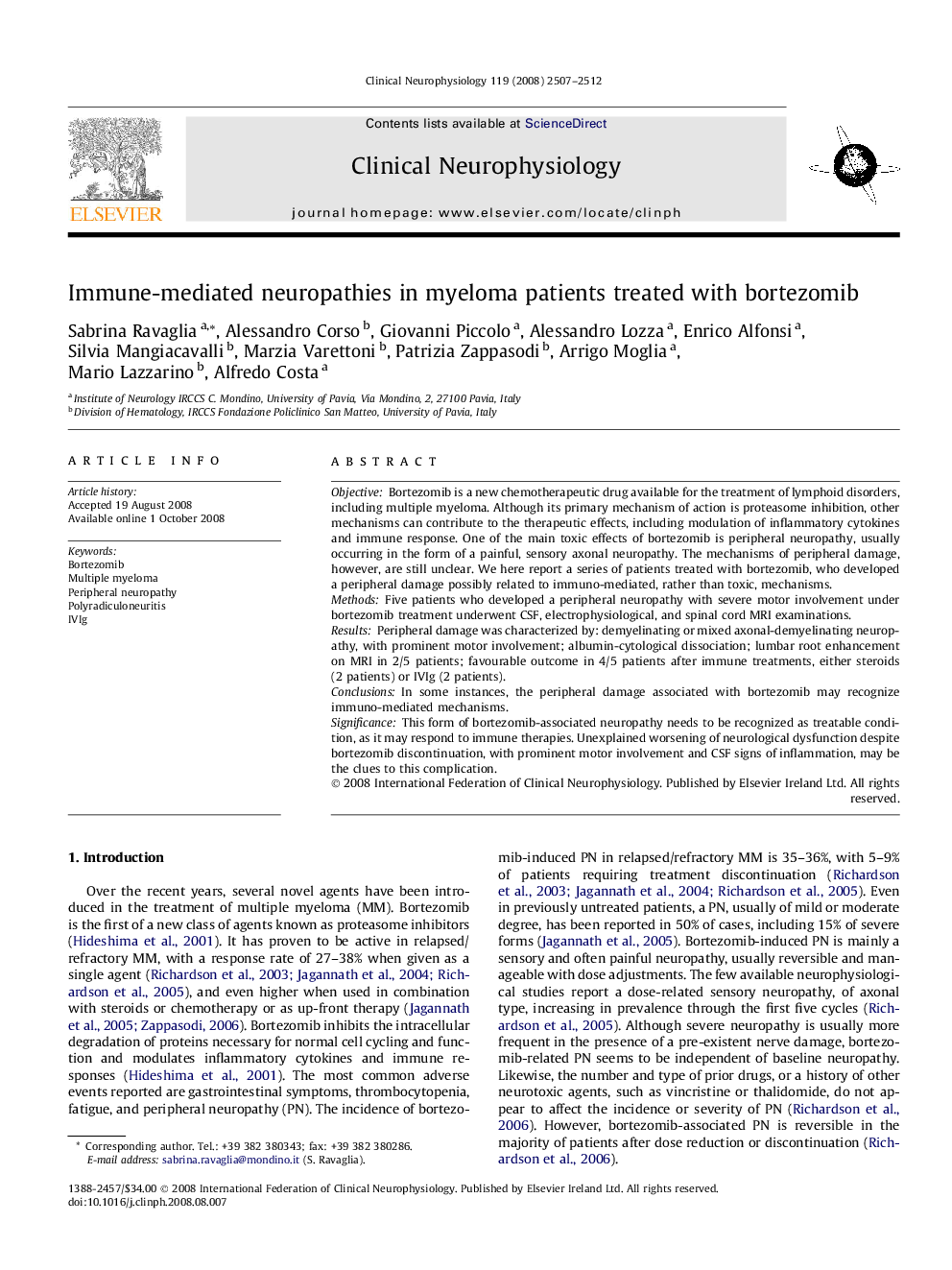| Article ID | Journal | Published Year | Pages | File Type |
|---|---|---|---|---|
| 3047010 | Clinical Neurophysiology | 2008 | 6 Pages |
ObjectiveBortezomib is a new chemotherapeutic drug available for the treatment of lymphoid disorders, including multiple myeloma. Although its primary mechanism of action is proteasome inhibition, other mechanisms can contribute to the therapeutic effects, including modulation of inflammatory cytokines and immune response. One of the main toxic effects of bortezomib is peripheral neuropathy, usually occurring in the form of a painful, sensory axonal neuropathy. The mechanisms of peripheral damage, however, are still unclear. We here report a series of patients treated with bortezomib, who developed a peripheral damage possibly related to immuno-mediated, rather than toxic, mechanisms.MethodsFive patients who developed a peripheral neuropathy with severe motor involvement under bortezomib treatment underwent CSF, electrophysiological, and spinal cord MRI examinations.ResultsPeripheral damage was characterized by: demyelinating or mixed axonal-demyelinating neuropathy, with prominent motor involvement; albumin-cytological dissociation; lumbar root enhancement on MRI in 2/5 patients; favourable outcome in 4/5 patients after immune treatments, either steroids (2 patients) or IVIg (2 patients).ConclusionsIn some instances, the peripheral damage associated with bortezomib may recognize immuno-mediated mechanisms.SignificanceThis form of bortezomib-associated neuropathy needs to be recognized as treatable condition, as it may respond to immune therapies. Unexplained worsening of neurological dysfunction despite bortezomib discontinuation, with prominent motor involvement and CSF signs of inflammation, may be the clues to this complication.
